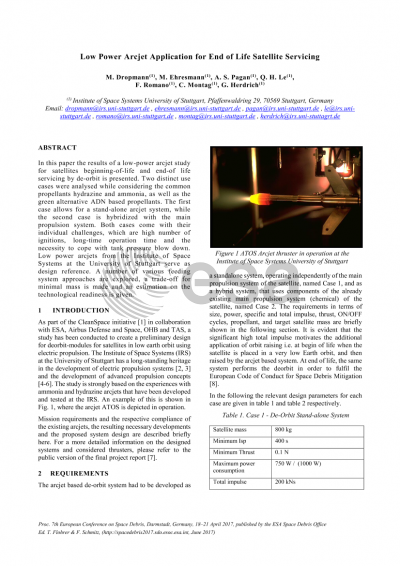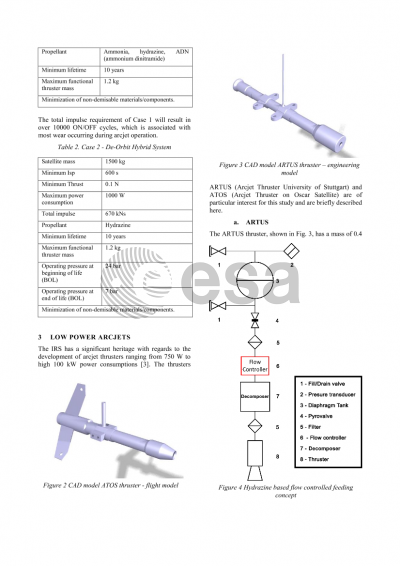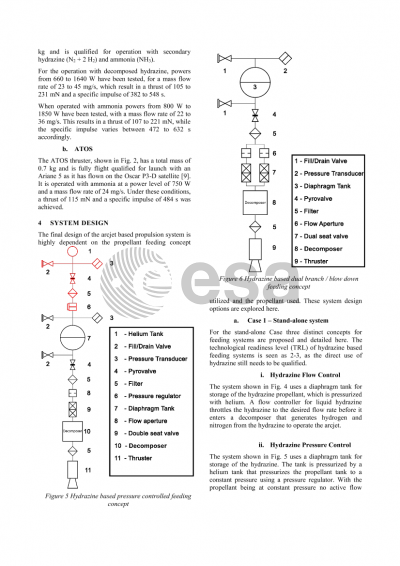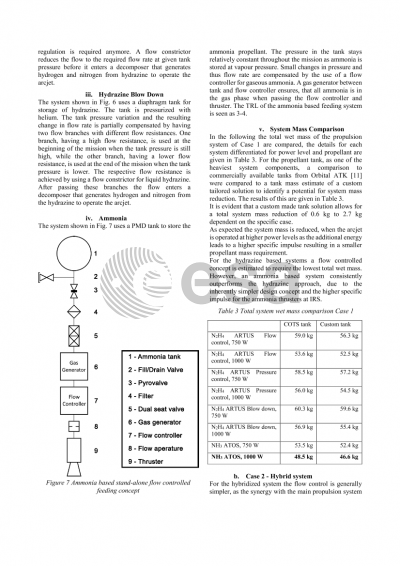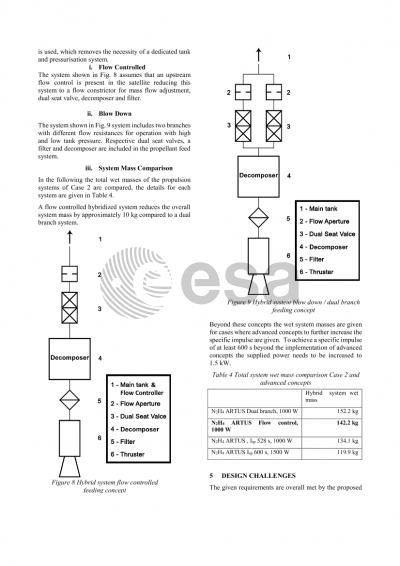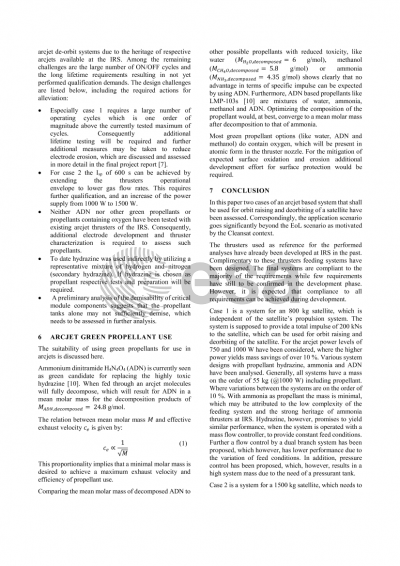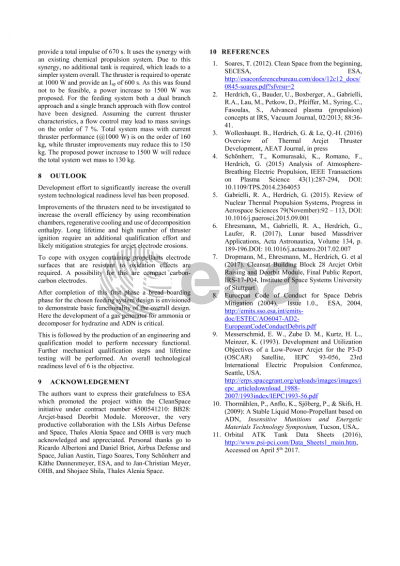Document details

Abstract
To limit the impact of space debris the European Code of Conduct for Space Debris Mitigation SD-OP-03 demands a maximum in-orbit time of 25 years after end of service [1]. Thus a satellite needs to obtain an orbit at end of life that will decay over maximally 25 years to an atmospheric entry trajectory to comply with this requirement. An active propulsion system is required for such a task to ensure proper orbit positioning, while the required propellant and propulsion system mass should be minimal to be cost effective. An electric propulsion system with high specific impulse allows for efficient utilization of carried propellant to keep the satellite mass low.
In this paper the capability of an arcjet based propulsion system for end of life satellite servicing is assessed [2]. The study is part of the ESA Clean Space Initiative [3]. Two main concepts for integration into a satellite bus are discussed. First, a dedicated stand-alone arcjet system, which can be seen as a black box for a customer, as it features its own tank, propellant feeding system, PPU and thruster. Second, a hybrid arcjet system integrated with the main propulsion system is considered to utilize the synergy with the tank and propellant feeding system of the satellite. The considered arcjet thrusters are based on the low power arcjets ATOS [4], ARTUS [5] and ARTUR [6] developed and tested by the Institute of Space Systems, University of Stuttgart. While the arcjet design is based on the properties and decomposition characteristics given by conventional propellants such as ammonia and hydrazine the operation with green propellants is discussed with regards for a future application.
As arcjets feature a higher thrust than alternative electric propulsion concepts with similar power consumption the time required to adjust to a final orbit is smaller. Thus, an arcjet based propulsion system could further be used to realize the final orbit insertion from LEO at beginning of life, which could reduce the required launcher mass, further increasing the competitiveness of an arcjet based propulsion system.
In this paper possible arcjet system architectures are presented and discussed with respect to their overall system mass to determine the most competitive design solution. It is shown that an arcjet is capable of fulfilling the role as end of life satellite servicing system.
References
[1] European Code of Conduct for Space Debris Mitigation, European Space Agency, 2004.
[2] Cleansat Building Block 28, Final Report, IRS-16-P07, Institute of Space Systems, University of Stuttgart, 2016.
[3] ESA Clean Space Initiative, 2005, http://www.esa.int/Our_Activities/Space_Engineering_Technology/Clean_Space.
[4] Riehle, M., Zube, D. , Messerschmid, E. et al: ATOS - Arcjet Flugexperiment auf dem Amateurfunksatelliten AMSAT-P3-D, Final report, 1994.
[5] Riehle, M., Kurtz, H. L., Auweter-Kurtz, M.: 1 kW Hydrazine Arcjet System Development, 25th International Electric Propulsion Conference, Cleveland, Ohio, USA, 1997.
[6] Bock, D., Auweter-Kurtz, M., Kurtz, H. L.: 1kW Ammonia Arcjet System Development for a Science Mission to the Moon, IEPC-2005-075, 29th International Electric Propulsion Conference, Princeton University, USA.
Preview
